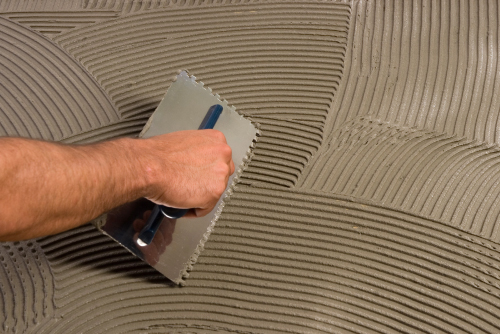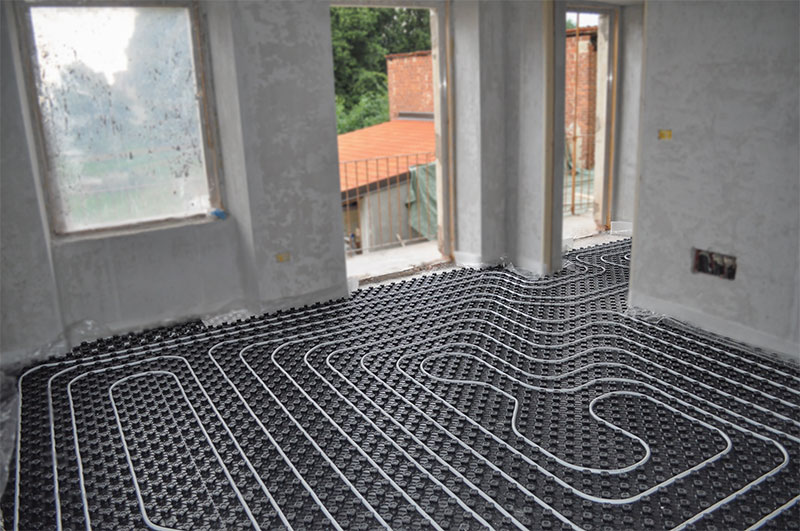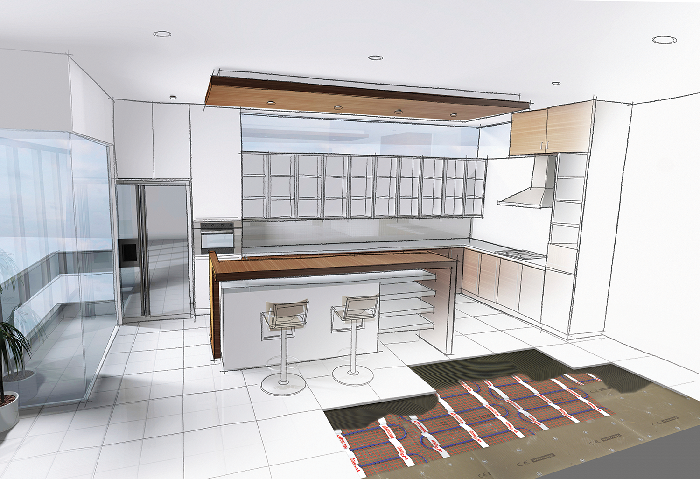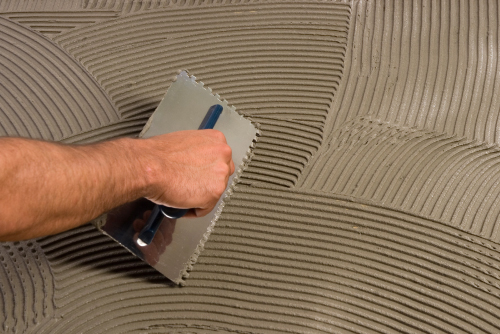Modified or unmodified thinset, what is the difference? This question has puzzled DIYers and construction professionals alike for years. Although very similar in name and application, these two products differ in critical ways.
What is Thinset Mortar?
Before we get into the differences between modified vs. unmodified thinset, it is essential to know what thinset is in general.
Thinset is a thin cement-like material capable of bonding tile to various substrates using only a very thin bed. Thus, the name thinset.
What is Unmodified Thinset Mortar?
Unmodified thinset is composed of three main ingredients; portland cement, sand, and powdered water retention additives. Unmodified thinset is sold as a dry powder mixture in a bag, very similar to concrete, and can be found in the tile section of just about any home improvement or hardware store.
When to Use Unmodified Thinset Mortar?
Traditionally, unmodified thinset mortar has been used to adhere an impervious tile to an impermeable backing. For example, unmodified thinset has been the preferred thinset for tile on concrete.
Because unmodified thinset needs to cure, a chemical reaction caused by hydration rather than dry, the waterproof materials allow the thinset to retain its moisture and form a strong bond between materials.
These days, it is essential to note that traditional rules of thumb about when to use unmodified thinset have become less reliable as new materials and formulas are used for tile. Most tile manufacturers will specify which type of thinset to use with their products. The same applies to modern waterproofing membranes, uncoupling membranes, and other backing materials. It is vital to use the manufacturer-recommended thinset in all tile applications.
What is Modified Thinset Mortar?
Modified thinset mortar has the same essential elements as its unmodified counterpart but includes latex/polymer additives. The additives increase adhesion, strength, and shock resistance while also reducing water absorption. Modified thinset is available as a powdered mixture in most, if not all, home improvement stores. Pre-mixed products are also sometimes available in sealed buckets.
When to Use Modified Thinset Mortar?
Because of modified thinset’s latex/polymer additives, you can use it to adhere tiles to porous materials. Traditionally, you would use modified thinset to adhere tile to a plywood subfloor.
Due to its absorbent and porous nature, plywood is capable of sucking the moisture out of unmodified thinset. Leaving less water in the mixture will allow for less hydration, and cause a weak bond between the tile and the subfloor.
Modified thinset’s latex/polymer additives create a robust and sticky bond between the two materials, even when porous substrates absorb water.
In recent years, tile manufacturers have required the use of modified thinset for more and more of their products. Modified thinset is now used in more situations where unmodified had been used before.
Truth be told, modified thinset has rapidly become more popular. Although circumstances still require the use of unmodified thinset, the many advantages of modified are rapidly making it the preferred product for most tile situations.
It is crucial to adhere to the requirements and specifications of underlayment, membrane, and tile manufacturers when deciding which type of thinset to use. Most manufacturers will expressly state when to use modified thinset and when to use unmodified thinset.
Tips for Mixing Thinset
When mixing thinset, regardless of whether it is modified or unmodified, there are a few essential techniques that will help ensure your success:
1. Add the powder to the water, not the other way around.
Pour water into your bucket, and then pour in your powdered thinset mix. By starting with water in your bucket, you won’t have dry, unmixed thinset on the bottom of your bucket.
2. Make small batches; don’t try to mix the whole bag all at once.
There are several reasons for this:
You want to be able to make minor adjustments to your mix as you go. Is your mix looking a little dry? No problem, add a little more water. Is your mix looking too wet? Sprinkle in a little more thinset. If you start with the whole bag of thinset and your mixture is too wet, you have nothing left to add to it.
Thinset has a finite amount of working time. You want to avoid getting caught in a situation where you have only used half of your mixture, but the thinset has become unworkable. Now you have to throw away the rest of the bucket and buy more thinset—what a waste.
An entire bag of thinset, even if it is flawlessly proportioned, will most likely choke the mix. In other words, the mixture will be too much thinset for you to mix it properly.
Use a mechanical mixer.
You can mix thinset by hand, but it is substantially more work and will inevitably yield worse results than a mechanical mixer. Buy a mixing paddle attachment for your drill; they are relatively cheap (about $12) and will make your life significantly easier.
You want your mixed thinset to have the consistency of cake frosting.
3. Run a trowel through your thinset to test the consistency. It should hold its ridges and have a light, whipped feel.
4. Wear protective equipment when you are mixing thinset.
Thinset contains silica dust. Inhaling silica dust is bad for your lungs, and long-term exposure can result in silicosis. Wear a mask or respirator when mixing thinset.
Thinset contains lime. Lime will burn and irritate your eyes if it splashes up into your face. Lime will also rapidly dry out your skin. Be sure to wear eye protection and rubber gloves when mixing thinset.
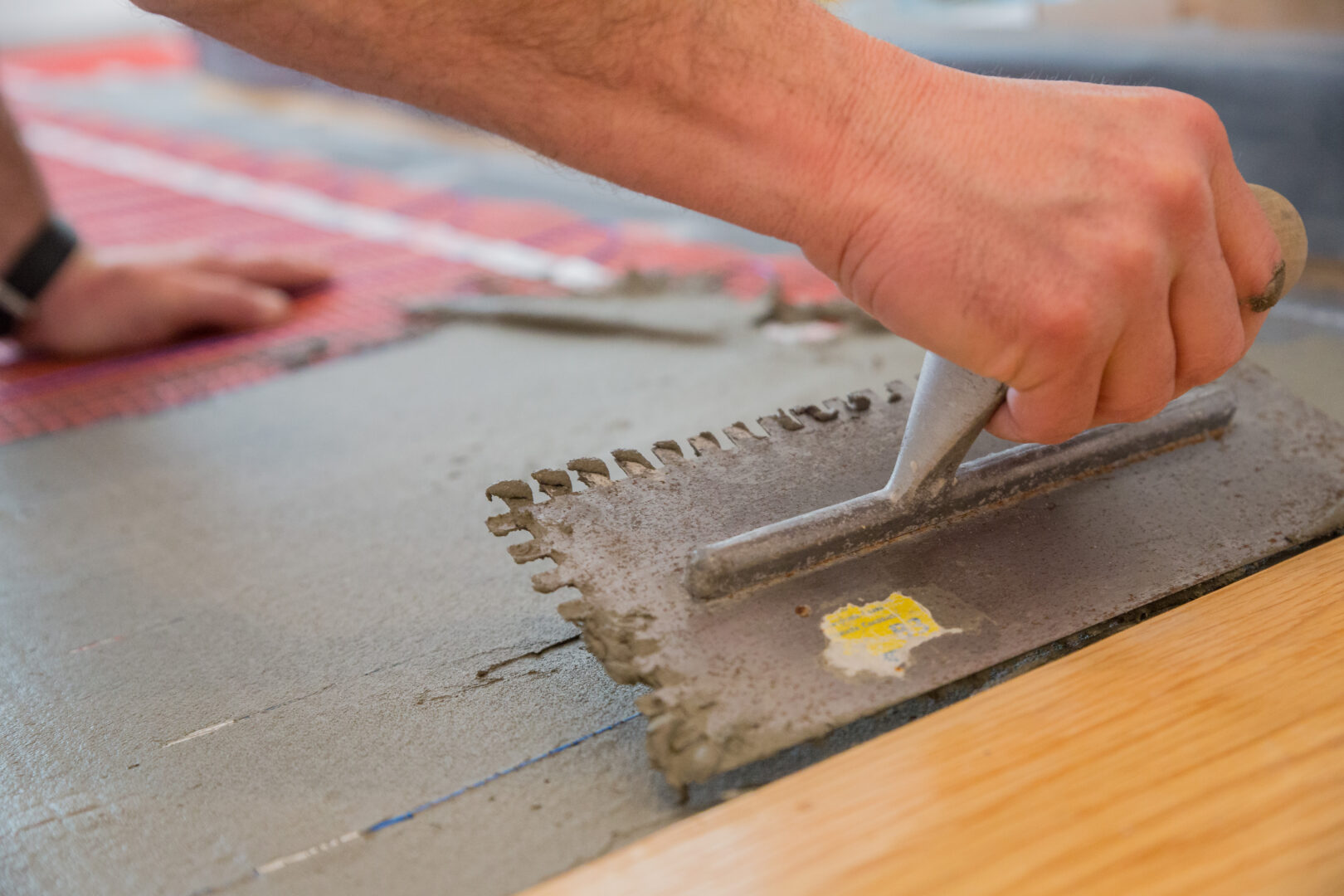
The Best Thinset for Radiant Floor Heating Installations
“What kind of thinset should I use for radiant flooring?” It’s a common question when installing radiant floor heat; the answer depends greatly on the manufacturer’s recommendations. Warmup recommends using modified thinset for their industry-leading floor heating products.
Warmup’s DCM-PRO System has very few restrictions to make installation more straightforward. The product can be installed with modified or unmodified thinset, above and below, and is even available in a peel-and-stick option to eliminate the need for thinset below the product.
It is important to note that if you use ceramic or stone tiles on top of your Warmup floor heating system, you must wait 1-3 weeks for the modified thinset to fully cure before turning on the heat. Turning on the heat before the thinset has fully cured could damage the system and cause the thinset to be weak and brittle.
Founded over twenty-five years ago, Warmup is an industry leader in underfloor heating solutions and smart control technology. Warmup’s proprietary technology and innovative products set the standard for energy-efficient heating in your home. With over 2 million systems sold, Warmup is the world’s best-selling floor heating brand.
Want to know more? Check out Warmup’s full line of heated floors and thermostats, get instant pricing, or contact our dedicated twenty-four-hour customer service.
